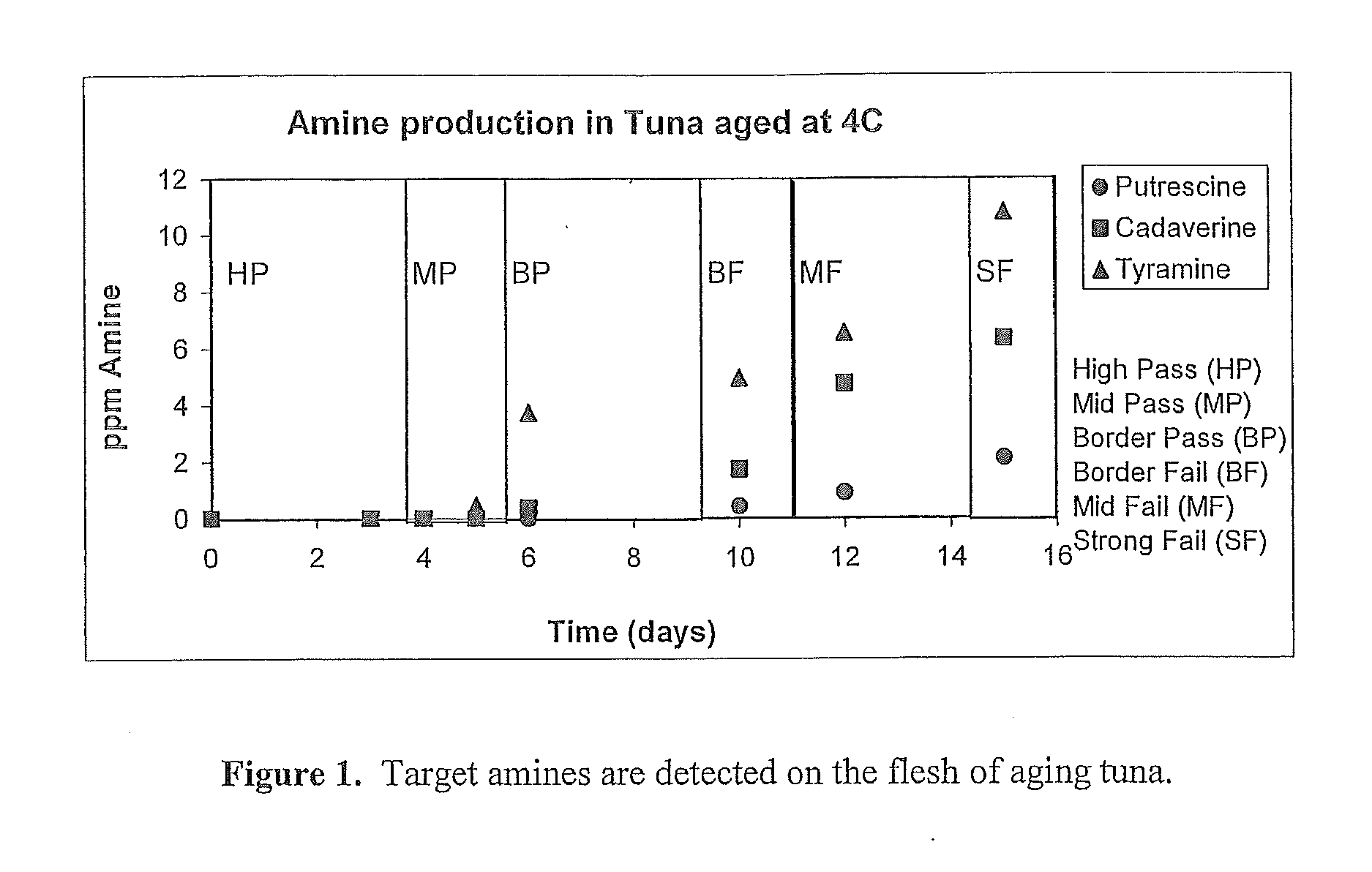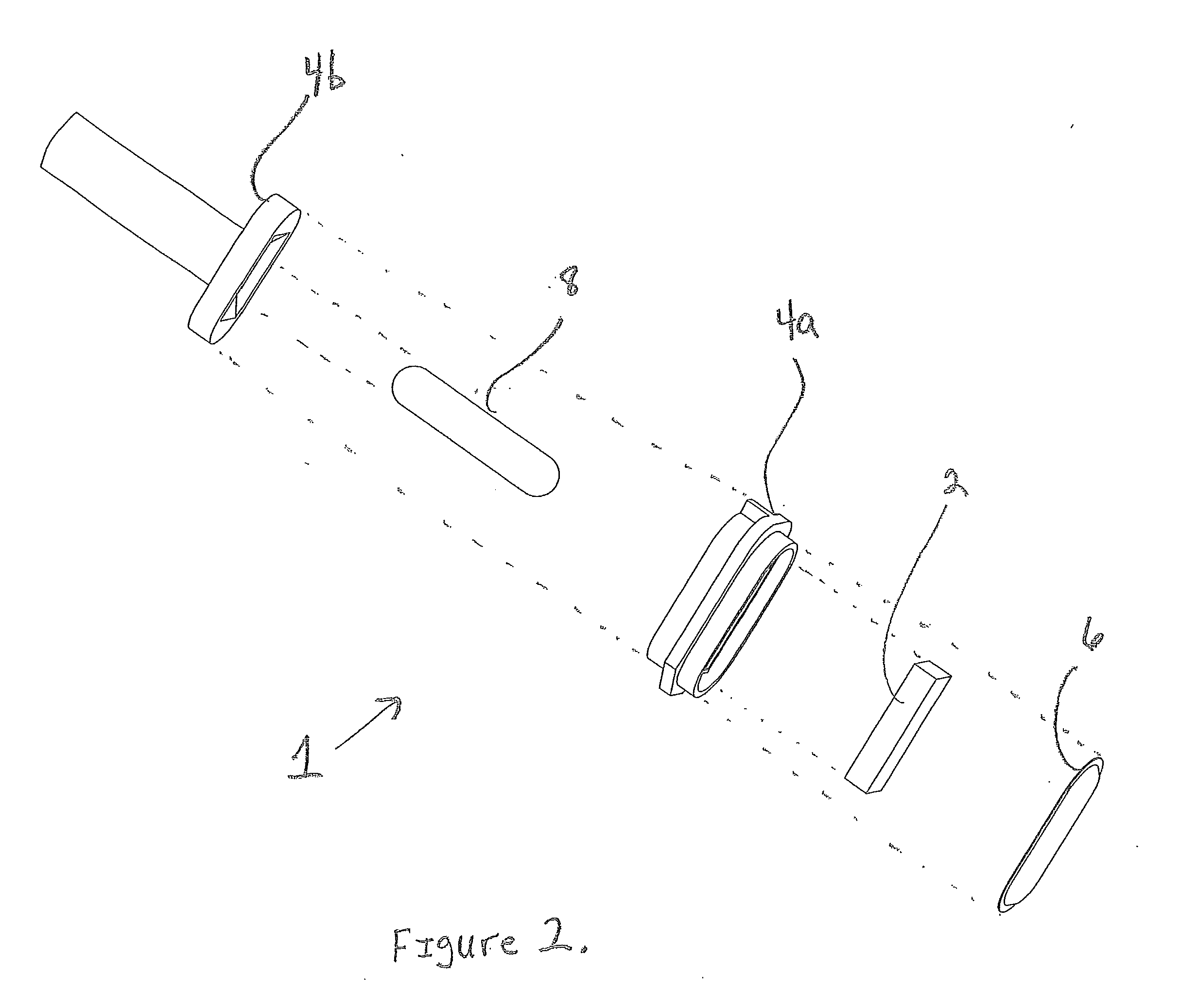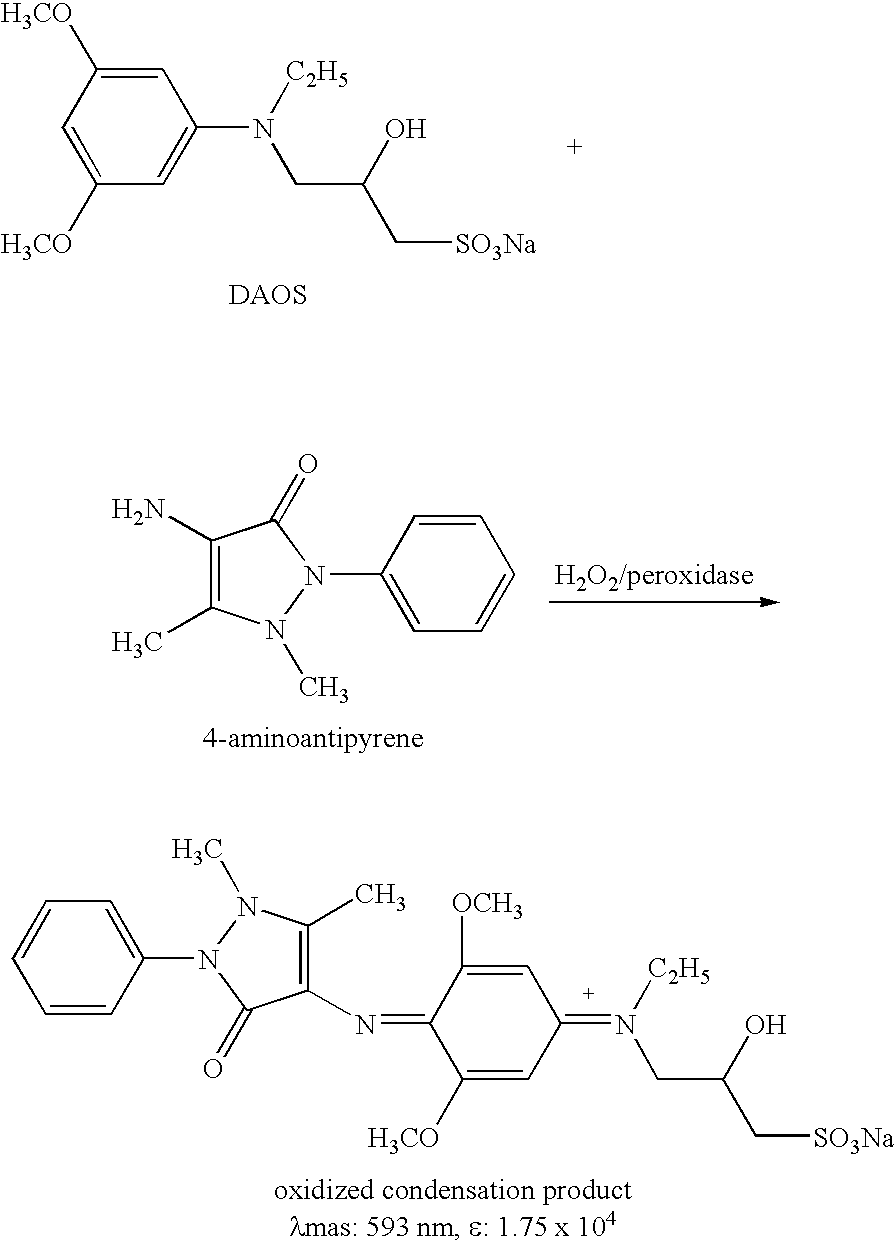Seafood spoilage indicator
a spoilage indicator and seafood technology, applied in the direction of biochemistry apparatus and processes, food testing, material testing goods, etc., can solve the problems of reducing the quality of food products, significant economic and health problems, and presently no available mechanism by which distributors, wholesalers, retailers and consumers can be assured of product freshness
- Summary
- Abstract
- Description
- Claims
- Application Information
AI Technical Summary
Benefits of technology
Problems solved by technology
Method used
Image
Examples
example 1
An Enzyme Based Nondestructive Sensor for the Detection of Spoilage Indicators (Putrescine, Cadaverine, Histamine and Tyramine) in Salmon
[0053]A) Preparation of enzymes powder: A predetermined unit activity of Monoamine Oxidase, Diamine Oxidase, and Peroxidase (1, 75, 108) is mixed together and dissolved in a sufficient amount of Potassium Phosphate Buffer pH 7.5 (50 mM). Unit activity of monoamine oxidase is defined herein as one unit of monoamine oxidase is the amount of enzyme that will oxidize 1 micromole of tyramine to p-hydroxyphenylacetaldehyde and hydrogen peroxide per minute at pH 7.5 at 37 degrees Centigrade (C) under the specific assay conditions. Unit activity of diamine oxidase is defined as the amount of enzyme that will cause the formation of 1 micromole of hydrogen peroxide from putrescine per minute at pH 8.0 at 30 C under the specific assay conditions. Unit activity of peroxidase is defined as the amount of enzyme that will form 1.0 mg purpurogallin from pyrogallol...
example 2
An Enzyme Based Nondestructive Sensor for the Detection of Spoilage Indicators (Putrescine, Cadaverine, Histamine and Tyramine) in Tuna
[0058]A) Tuna was sampled using the exact enzyme powder (example 1-A), indicator dye powder (example 1-B), and sampling matrix (example 1-C) that is described above.[0059]B) Sampling tuna with the nondestructive sensor for the detection of spoilage indicators: Sampling matrix was pre-moistened with water. The enzyme powder and indicator dye powders were reconstituted in liquid (water) and combined. The sampling matrix is then used to wipe the surfaces of a piece of tuna (from 2 inches by 2 inches to a whole tuna steak). The tuna should be wiped in a back and forth and up and down motion while applying little pressure. The wiping technique and sampling matrix will cause no damage to the piece of fish. The cover membrane is removed from the sampling matrix and the reconstituted enzyme / indicator dye solution is added to the polyurethane polymer for the ...
example 3
An Enzyme Based Nondestructive Sensor for the Detection of Spoilage Indicators (Putrescine, Cadaverine, Histamine and Tyramine) in Shrimp (Both Raw and Cooked)
[0061]A) Shrimp (both raw and cooked) was evaluated using the same enzyme powder (example 1-A), indicator dye powder (example 1-B) and sampling matrix (example 1-C) that is described above.[0062]B) Sampling shrimp (both raw and cooked) with the nondestructive sensor for the detection of spoilage indicators: Sampling matrix was pre-moistened with water. The enzyme powder and indicator dye powders were reconstituted in liquid (water) and combined. The sampling matrix is then used to wipe two pieces of shrimp with both shells on and off. The shrimp should be wiped in all directions while applying little pressure. The wiping technique and sampling matrix will cause no damage to the shrimp. The removable membrane is removed from the sampling matrix and the reconstituted enzyme / indicator dye solution is added to the polyurethane pol...
PUM
| Property | Measurement | Unit |
|---|---|---|
| size | aaaaa | aaaaa |
| temperature | aaaaa | aaaaa |
| time | aaaaa | aaaaa |
Abstract
Description
Claims
Application Information
 Login to View More
Login to View More - R&D
- Intellectual Property
- Life Sciences
- Materials
- Tech Scout
- Unparalleled Data Quality
- Higher Quality Content
- 60% Fewer Hallucinations
Browse by: Latest US Patents, China's latest patents, Technical Efficacy Thesaurus, Application Domain, Technology Topic, Popular Technical Reports.
© 2025 PatSnap. All rights reserved.Legal|Privacy policy|Modern Slavery Act Transparency Statement|Sitemap|About US| Contact US: help@patsnap.com



